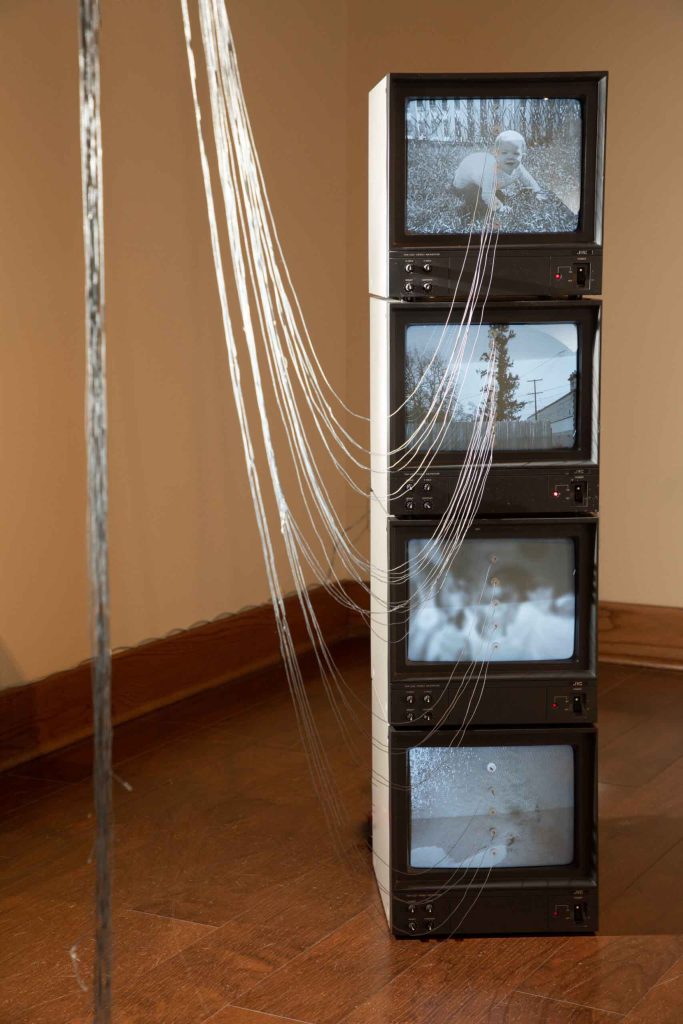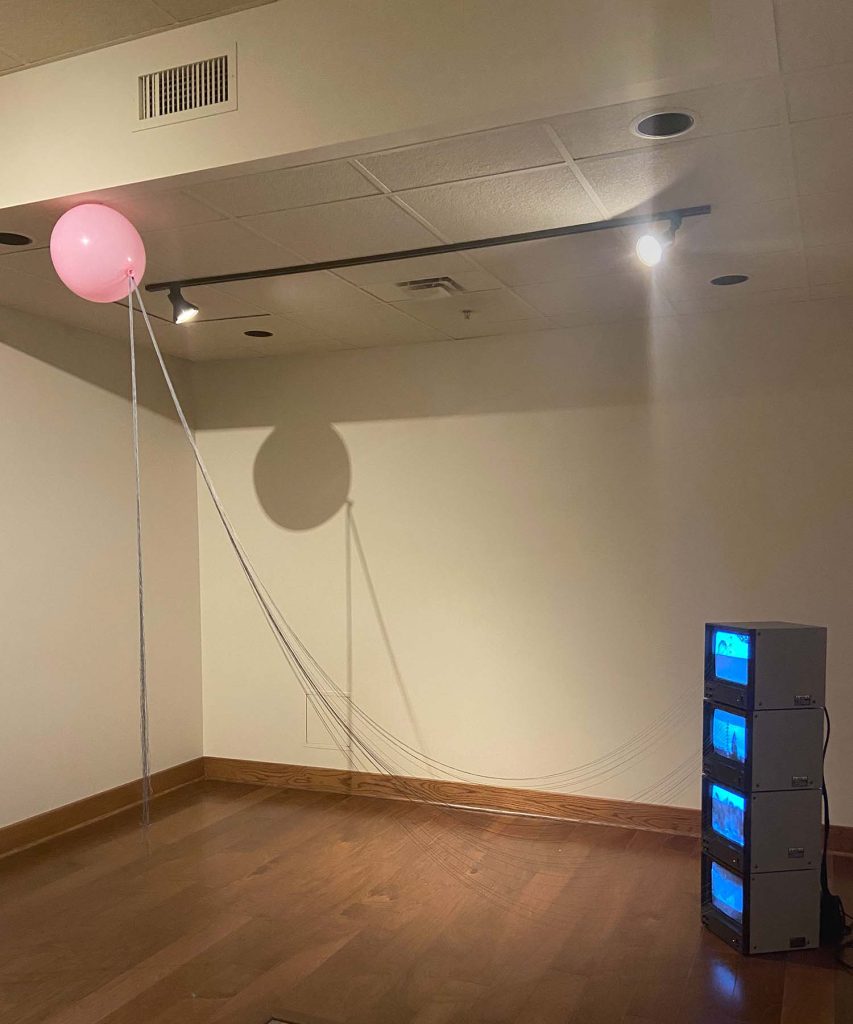And, Other, Etceteras



monitors, video, fishing line, pink balloon (2020)
All the nerves manifestly arise from the spinal cord… and the spinal cord consists of the same substance as the brain from which it is derived – Leonard de Vinci, notebook
I like to question perception within my artwork. I take comfort in believing there is no truth. For me the idea of truth is a symptom of virtue, religion and other societal constructs that hold us back, keep us in our place, make us a good girl or boy.
I am an artist who works with many mediums. What I choose is dependent on the ideas I am trying to convey. I often work with new and/or old technologies that I can deconstruct. Mostly I work with video in a performance setting. Occasionally, I create installations. I love to collaborate with other artists and thinkers who can help me get unstuck.
For Dura Mater, I had the pleasure of working with Dr. Katinka Stecina. Dr. Stecina is a neuroscientist working in spinal cord research. Over the course of the year Dr. Stecina has taken the time to teach me about her research. What I have learned the most is how specific and detailed scientific researchers have to be. For me, the responsibility I have taken on in this collaboration is to find a way to tell the story of this research and link it together with less quantitative thinking. Perhaps even bringing in the vernacular to scramble the veracity in order to find new approaches to our understandings together. Dr. Stecina has been very generous and open about letting me explore the fantasy within the very concrete foundations of her work.
This installation is in some ways very literal. There is a brain, four compartmentalized segments of the spinal column, nerves travelling between the segments and electrical connections. The brain has long been considered the control centre for the rest of the body. But there is another way to think about it according to Dr. Stecina who says the brain is dependent on all the inputs it receives from the rest of the body.
For whatever reason that is not easily discoverable without a history PhD, power is distributed through a central figure that knows all–is the boss. Allegories for this type of power struggle are, the central control room, the motherboard, the engine, etc. Most objects and systems designed by humans use this (dare I say) patriarchal system of thought; the idea that nothing can be accomplished without supreme authority. In middle school biology, this is also a way of thinking as it pertains to the brain. But what if we think of this as false, at least partially, can we think about systems where all the parts are equal and nothing is more important than the central figure? Can we imagine for a moment that power can be decentralized? Ants, bees, mushrooms, and yeast all exist with only minimal input /output from the central figure. They are all parts of a system cooperating together. Can a new way of thinking bring all these parts an equal respect? How drastically could research change? What would our designed objects and systems be and do? And (if you can please bare with my fantasy longer), imagine what society could be if we treated the central figure as an equal part of every one else’s equal part.
What happens if we bring decentralized thinking back to the body and medical research? Theories exist about microbial makeup and its connection to mood. Similarly, Dr. Stecina’s work around mobility examines the power play between the spinal cord and the brain. I would never try to explain the precision of her work but my installation takes in nuances of conversations we have had. Within the structures of the spinal nerves there are signals, memory proteins, serotonin, and other etceteras, and the brain is painfully unaware of its own reliance.